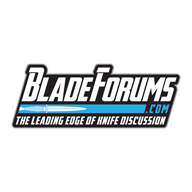Do you have any experience with the different Diamond or CBN bondings? Trying to differentiate between metallic (copper-tin) or resin with regard to performance and longevity.
Yes, I have many different diamond and CBN stones - plated, resin and metallic bonded. As far as metallic bond is concerned, I only have Poltava branded ones.
I like the resin and softer bonded diamond & CBN stones for the fact that they act and feel a lot like traditional whetstones and leave a
very good edge. They have good metal removal rate vs edge quality.
When it comes to fast metal removal, diamond / cbn
plated stones are almost unbeatable but can cause edge chipping when you fully apex the edge on a coarse grit plated stone. FYI, the Chinese plated diamond stones are mostly excellent but they seem to top out in grit at about 800-1000. They sell "2000","3000" etc grits but in all cases and tests I've done, it's all the same 1000/800 grit stone just branded with different logos. These stones are excellent value for money and work very well for quick sharpening. Lubrication helps a lot to significantly extend the life of these stones but eventually they will lose grit and slowly deteriorate in performance.
As far as
metallic bonded copper/tin stones go, I do like them a lot because they will give you the same effect as a resin bonded stone in that they can be refreshed and will last a very, very long time. In my opinion they work best with lubrication (I use soapy water) and they cut nice and fast, but they can load up a bit with steel and glaze a little over time. There has been a lot of discussion and experimentation on how to refresh the surface when needed but I've found a Nagura to clean them up well in most cases after sharpening. When they do need some deeper surface reconditioning, some guys use ferric chloride to etch the metallic bond away a bit but that can be very hard to control and can ruin the stone if you're not careful. Plain old silicon carbide with the traditional method of lapping stones work well on them to remove and refresh the top surface. After refreshing the surface this way, some bits of silicon carbide can temporarily embed into the metallic bond, so it's probably best to try and use a grit just slightly below the stone grit if you're concerned about this.
There has been a lot of rumours about using silicon carbide on Poltava CBN metallic bonded stones to refresh them, but it has been confirmed that this is actually how Poltava does it themselves so no doubt - it is an acceptable method.
I like to use my coarse and cheap diamond plated stones for quick metal removal when I re-profile or remove chips from inexpensive steel knife edges, followed up by Venev resin stones. For more expensive knives I use my CBN Poltava 120 grit, followed up by Venev resin diamond or CBN. Note that this just my current method and current personal preference,
many other methods and steps also work well.
 www.bladeforums.com
www.bladeforums.com
 www.bladeforums.com
www.bladeforums.com
